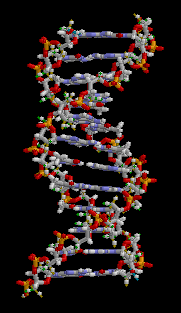My Biologist's Adventure #11| What's in your genomes ?

Now, everybody knows what is genome, because this is the era of Genomics. A genome is including all of the genes, it is a complete set of DNA. All of the information that needed to maintain and build the organism is in the genome.
When we're studying about the genome, it is like a treasure hunt game. You need to find many clues and hint to achieve the objective but along the road, you don't know what you can find. Studying a genome is full of surprises.

As we know, the virus can be harmful to all organisms that live in the world and worse it also can be doing something special to our genome. DNA polymerase RNA- Dependant is a special enzyme of RNA virus. These special enzymes can produce DNA itself using their own RNA starting material. It's a normal cycle for them, even if the RNA does not strictly need for the infection.

RNA will be spliced and modified when one of our regular genes has been transcribed into RNA. It can turn a new RNA back into the original DNA gene if there is the reverse transcriptase. At this point, the gene won't be identical. The "mother" and "daughter" gene won't be identical. This because the "daughter genes are missing the introns and promoters.
This situation may happen however, the new "daughter" DNA integrates into our genome again, then what will this cause? We will have 2 similar genes, one is "mother" it will work as normal, and the others don't do anything because of the missing the "daughter". This is called a processed pseudogene, the abnormal useless gene.

We can estimate how long ago this process occurred, because of the number of the mutation is correlated with the time that passed since at the stage of the birth of pseudogene. The age of pseudogene can basically be known.
If we know the ages of the pseudogenes, we can assume that one of them are old and some of them are young. From this, older pseudogene can be predicted that this gene will be shared with the common ancestor, meanwhile, the evolutionary history only more recently will appear by the younger pseudogenes. Predictive test of common ancestry will be allowed us to carry on it. It is proved on how a certain species are evolving.
Every day, our body is producing the viral protein. Pseudogenes are inherited from our ancestor, this is the pseudogenes has been infected once. Thanks for reading my adventure. Keep reading!!!
Reference and Further Reading
| TOPIC | WEBSITES |
|---|---|
| Wikipedia Pseudogene | https://en.wikipedia.org/wiki/Pseudogene |
| Wikipedia Genomes | https://en.wikipedia.org/wiki/Human_genom |
| Human Genomes | https://www.genome.gov/11006943/human-genome-project-completion-frequently-asked-questions/ |
| Wikipedia DNA | https://en.wikipedia.org/wiki/DNA |
| Video Source | https://www.youtube.com/channel/UC4wulY_YL4vPZfRVH5mWnKg |
| Image Source | http://keywordsuggest.org/gallery/1217505.html |
| GIF source | https://en.wikipedia.org/wiki/DNA |
SteemSTEM Community
This one also I love to write also guys. SteemSTEM is a community in Steemit, I am very proud with this community because @steemstem is encouraging people like me to promote and write about Science, Technology, Engineering and Mathematics(STEM) postings on Steemit.Because of this also important things that we should know as our additional knowledge. If you want to post about , Science, Technology, Engineering or Mathematics please don't forget to add #steemstem at your tag .
Join and learn about the project , Join us on steemit.chat:
(https://steemit.chat/channel/steemSTEM)

This is a test comment, notify @kryzsec on discord if there are any errors please.
Being A SteemStem Member
This is a test comment, notify @kryzsec on discord if there are any errors please.
Being A SteemStem Member
Nice
Thanks for reading...Keep reading and follow my adventure okay :)
Ok.
When I think of DNA, I think of a blueprint that dictates or defines the makeup of an individual organism. My DNA is mine, and different from all others, like a fingerprint.
But in your discussion above (which I admit I'm too much of a layman to fully understand), it would seem that DNA differs throughout the cells of an individual organism? RNA and viral DNA is replicated in different ways across the different cells of a body? Am I understanding that right?